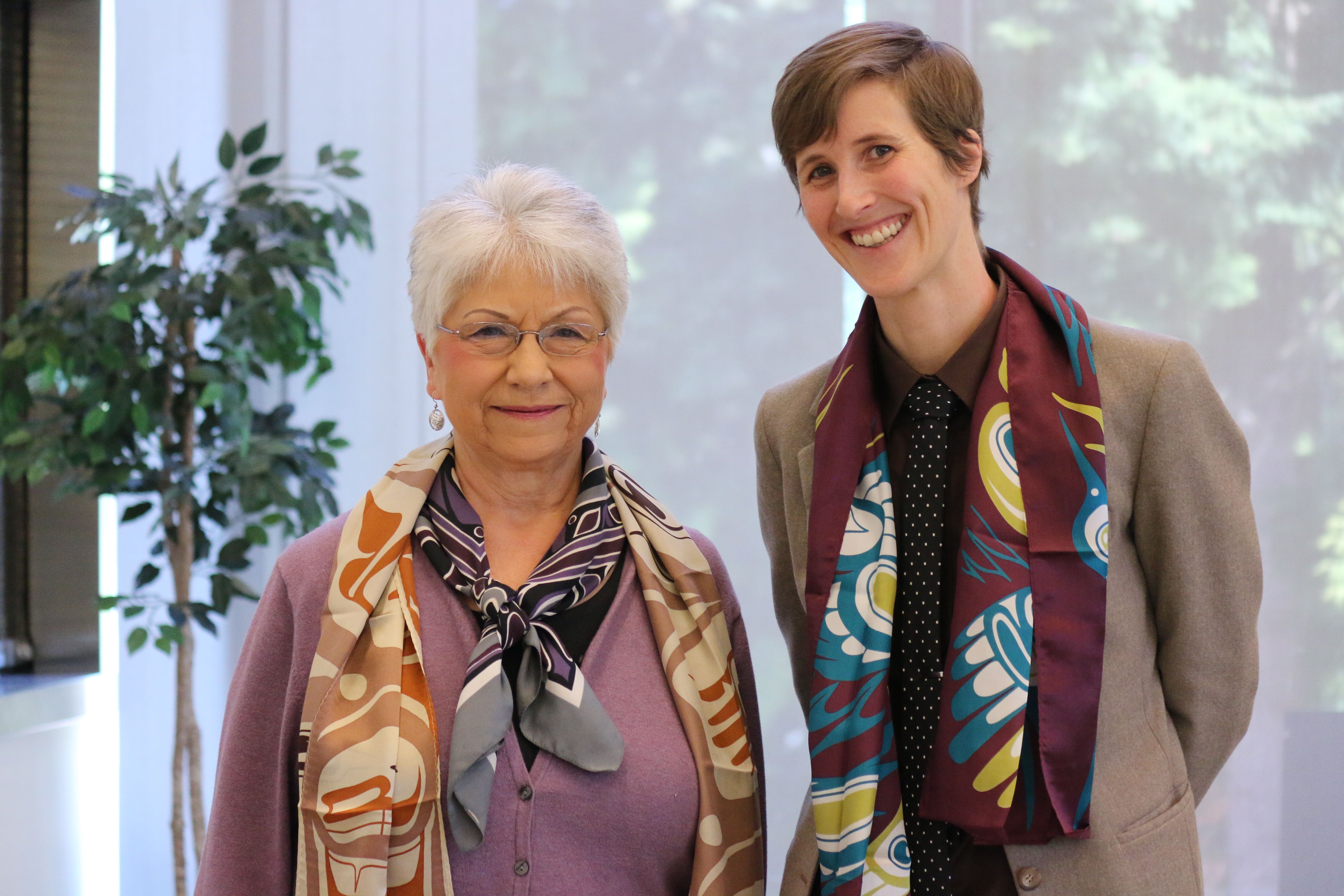
Keynote speaker Edie Loyer-Nelson, a former trustee of SCC and current Duwamish tribal member, and social sciences faculty member Michelle Kleisath at the Earth Day kickoff event.
Earth Week 2015 kicked off Monday with an informative speech by keynote speaker Edie Loyer-Nelson, a former trustee of SCC and current Duwamish tribal member. Edie Loyer-Nelson talked about what we mean by “Fostering an Ethic of Place” and why one needs to know who and what came before them to make sense of where we are today.
Earth Week festivities continue Tues., April 21 with three great events:
Racial/Restrictive Covenants: The Shameful Legacy of Greater Seattle
PUB 9208, 11:30 a.m. – 12:20 p.m.
Professor Ernest Johnson will discuss the history of restrictive covenants in the Seattle area, with the end of these only coming with the rise of the Civil Rights Movement. He will identify the land developers and real estate companies who wrote most of the regions racial and restrictive covenants, while also identifying the biggest names in land development were also the biggest names in Seattle’s segregation history.
Princess Angeline Film Showing
PUB Quiet Dining Room (9208), 12:30-1:45 p.m.
This film explores the story of the Duwamish people and their unrecognized tribal status primarily through the life of Princess Angeline the daughter of Chief Seattle. After watching the movie Prof. Michelle Kleisath and Duwamish tribal member Edie Loyer-Nelson will lead a discussion of the film.
Nature Walk Campus/Upper Boeing Creek
Meet outside the PUB Quiet Dining Room (9208), 1:45-3:45 p.m.
Explore the interface between the college and the beautiful forests that surround the campus with Prof. Matt Loper. Learn about the natural and cultural history of this interesting area, including uses of plants by native peoples and the establishment of the Boeing family hunting estate. Visit the “Al Gore Memorial Sink Hole” and see how a newly created wetland has helped to reduce the threat of floods and brought back valuable native habitat.
